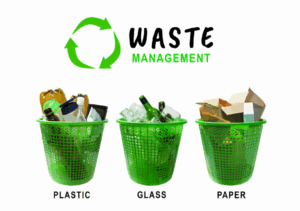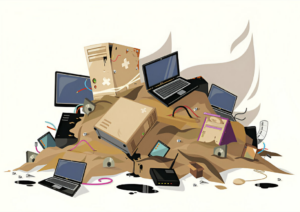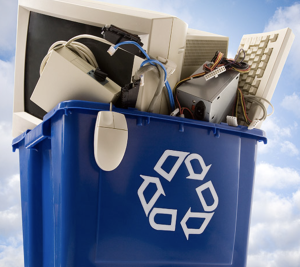E-waste, or electronic waste, is one of the fastest-growing waste streams globally, driven by the rapid pace of technological advancement and consumer demand for the latest electronic devices. Discarded products like smartphones, laptops, and other electronic gadgets pose significant environmental and health risks due to the presence of hazardous materials. Effective e-waste management is crucial to mitigating these risks and promoting sustainability. This article explores the best practices and technologies transforming e-waste management today.
Understanding E-Waste and Its Impacts
E-waste management in Bangalore comprises a wide range of discarded electronic devices and components, including computers, televisions, mobile phones, and household appliances. These items often contain toxic substances like lead, mercury, cadmium, and brominated flame retardants, which can leach into the environment if not properly managed. The improper disposal of e-waste can lead to soil contamination, water pollution, and adverse health effects on communities exposed to hazardous waste.
Best Practices in E-Waste Management
Effective e-waste management involves a combination of regulatory frameworks, corporate responsibility, and consumer participation. Here are some best practices that are making a significant impact:
a)Regulatory Policies and Legislation
Governments worldwide are implementing strict regulations to manage e-waste. Policies such as the European Union’s Waste Electrical and Electronic Equipment (WEEE) Directive mandate the collection, recycling, and recovery of e-waste. These regulations place the responsibility on manufacturers and importers to ensure their products are disposed of properly, encouraging the design of more sustainable products and promoting recycling efforts.
b)Extended Producer Responsibility (EPR)
Extended Producer Responsibility (EPR) is a policy approach where producers are given significant responsibility—financial and physical—for the treatment or disposal of post-consumer products. EPR incentivizes manufacturers to design products that are easier to recycle and to establish take-back programs. Companies like Apple and Dell have pioneered such initiatives, offering trade-in and recycling programs that help reduce e-waste through e waste management companies in Bangalore.
c)Public Awareness and Education
Educating consumers about the importance of e-waste recycling is crucial. Awareness campaigns can inform the public about the environmental impact of e-waste and the benefits of recycling. Programs that provide information on where and how to dispose of e-waste responsibly can increase participation rates and ensure that more electronic waste is properly recycled.
d)Collection and Recycling Infrastructure
Developing efficient collection systems and recycling infrastructure is essential. This includes setting up convenient drop-off points, organizing collection drives, and ensuring that e-waste is transported to certified recycling facilities. Effective logistics can significantly improve the collection rates of e-waste and ensure that it is processed correctly.
Innovative Technologies in E-Waste Management
Technological advancements are playing a critical role in improving e-waste management processes. Here are some of the cutting-edge technologies that are transforming the sector:
a)Automated Sorting and Disassembly
Advanced robotic systems and automated sorting technologies are revolutionizing the way e-waste is processed. These systems use artificial intelligence (AI) and machine learning algorithms to identify and separate different types of materials accurately. Automated disassembly robots can efficiently dismantle electronic devices, recovering valuable components and reducing the need for manual labor.
b)Hydrometallurgical and Pyrometallurgical Processes
Traditional methods of extracting valuable metals from e-waste involve pyrometallurgical processes, which use high temperatures to melt down materials at e waste collection centre in Bangalore. While effective, these methods can be energy-intensive and produce harmful emissions. Hydrometallurgical processes, which use aqueous solutions to extract metals, offer a more environmentally friendly alternative. These methods can recover metals like gold, silver, and copper with higher efficiency and lower environmental impact.
c)Bioleaching
Bioleaching is an innovative technique that uses microorganisms to extract metals from e-waste. Certain bacteria and fungi can leach metals from electronic components, offering a sustainable and less hazardous method of metal recovery. This biological approach has the potential to revolutionize e-waste recycling by providing a low-cost, low-energy alternative to traditional methods.
d)Chemical Recycling
Chemical recycling involves breaking down plastic components of e-waste into their original monomers or other useful chemicals. This process can convert mixed plastic waste into high-quality raw materials, which can then be used to manufacture new products. By turning waste into valuable resources, chemical recycling supports the principles of a circular economy and reduces the need for virgin materials.
e)Blockchain for Traceability
Blockchain technology is being explored to enhance the traceability and transparency of e-waste management by IT Asset disposal in Bangalore. By creating an immutable ledger of e-waste transactions, blockchain can ensure that electronic waste is handled responsibly throughout its lifecycle. This technology can help prevent illegal dumping, verify compliance with environmental regulations, and build consumer trust in recycling programs.
The Role of Circular Economy
Adopting a circular economy approach is fundamental to transforming e-waste management. The circular economy emphasizes the importance of keeping products, components, and materials at their highest utility and value at all times. This involves designing products for longevity, repairability, and recyclability, as well as fostering business models that promote reuse, refurbishment, and remanufacturing.
Companies are increasingly adopting circular economy principles to reduce e-waste. For example, modular designs allow for easier repair and upgrading of devices, extending their lifespan and reducing the need for new products. Leasing and product-as-a-service models also encourage manufacturers to take back products at the end of their lifecycle, ensuring they are properly recycled or refurbished.
In Conclusion
The effective management of e-waste is a complex but crucial task that requires the concerted efforts of governments, industries, and consumers. By implementing best practices such as regulatory policies, EPR, public education, and developing robust recycling infrastructure, we can significantly reduce the environmental impact of e-waste. Moreover, embracing innovative technologies like automated sorting, bioleaching, and blockchain can further enhance the efficiency and sustainability of e-waste management processes by e-waste recycling company in Bangalore. Moving towards a circular economy will not only help in managing e-waste more effectively but also contribute to the broader goal of sustainable development. Through these combined efforts, we can transform e-waste from a growing problem into a valuable resource.







